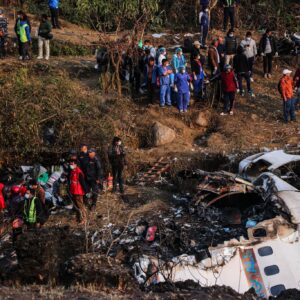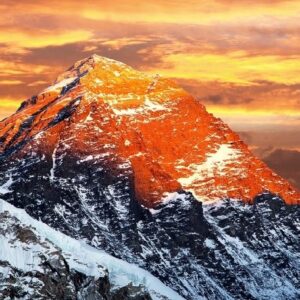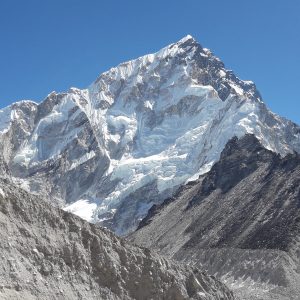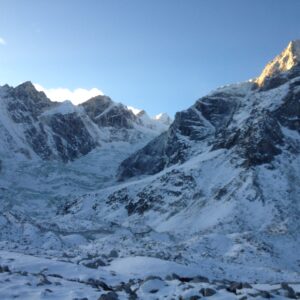
Major Festivals of Nepal
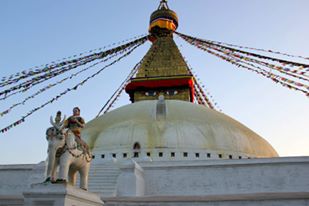 12 Sep, 2020
12 Sep, 2020
Major Festivals of Nepal
Nepal is a multicultural, multilingual, and multi-ethnic country. Our country Nepal is a very dazzling and twinkling necklace of 4 castes and 36 sub caste. The connotation of “Unity in Diversity” is the main basis of here. Almost all citizens of different cultures, religions, and mother's language live here. In addition, people have their own social norms and traditions according to their topographical region and
Nepalese have diverse beliefs and ethnic backgrounds. Despite these facts, all unite in the celebration of the year’s major festivals. Festivals such as Dashain and Tihar are of national significance; such as Bisket Jatra or Rato Machchhendranath Jatra. Likewise, this Jatra belongs to the traditions of the old Valley town and still others, such as Chhath, and are observed only by a particular ethnic community. These specific and significant festival proves the way culture promotion and preservation. Moreover, it brings mutual understanding and collaboration among the people.
The vivid cultural diversity of Nepal can be observed in the difference of different festival celebrations. Here are depicted the 10 major festivals in Nepal. According to the mythological and epic literature all these festivals were celebrated in Nepal devoted to the old Hindu religion. The key point of the festivals celebrated in Nepal is all these celebrations were enjoyed with fantastic enthusiasm. While some of them were celebrated on the basis of the lunar calendar moreover some of them were celebrated on the basis of astrologers.
Some of the main festivals of Nepal are listed below -
Dashain and Tihar:
Dashain has considered one of the most popular (82% of Hindu) people celebrated the national festival of Nepal. This auspicious festival falls on the month of Asoj Kartik (September- October). People indulge in 4 this festival as the biggest festival of the year. Fifteen days celebration of this festival falls according to the lunar annual calendar. Throughout, this 15 days goddess Durga is the main manifestation of this festival. On the 1st day of Dashain ( Ghatasthapana), Hindu people prepare for jamara of Maize, Barley. During 9 days 9 avatars of the Goddess of Durga is worshipped. Although, to prohibit the bad evil from the house an abundant number of animal sacrifices for drenching the blood to Goddesses Durga. On the last 10th day people receive Tika, Jamara, and lots of blessings from their elder relatives. This continues for the last 5 days and ends on the full moon day called Kojagrat Purnima.
Tihar / Deepawali
Tihar is also known as Deepawali and this is the 2nd biggest national festival of Nepal. Tihar is also known as the festival of color and lights. On the auspicious occasion of October- November, this festival is celebrated. The major manifestation of Tihar is Goddesses Laxmi. Behind this festival, there is a mysterious and interesting part. Tihar reflects the story of Yamaraj and his sister the Yamuna. She wants to see her brother and sen Kag (crow), Kukur ( Dog), and Gai (Cow). At last, she herself came to call and see her brother. To protect her brother from bad evil she makes a circumference of garland and mustard oil and put 7 colored tika on the forehead of her brother Yamaraj. So from this month of October and November, every sister worships her brother just like the Yamuna.
Moreover, Young boys and girls also play Deusi and Bhailo in the old platform of singing and dancing. Traveling from home to home and collecting money and sweets bring more excitement and collaboration.
Janai Purnima
Janai Purnima is also a famous festival in Nepal. According to the Nepali calendar, this festival falls on the full moon day of Shrawan and Bhadra month. During this festival men and boys wear thread which is manifested by the thread and also put door its 9 round thread on the wrist). Not only that, but people also eat kwanti mixture of several grains to remove the coldness of the body on this day. Hindu men change their thread after taking bath after who has performed the Bratabandha ceremony. Janai must not disgrace the religion that supports the control over each. Janai consists of three cords which symbolize the speech, body, and mind. On this auspicious day, the Newar community celebrates kwanti Purnima. Kwati is a soup of Black gram, Garden pea, cowpea, Chickpea, rice bean, etc. These beans were soaked for 3 -4 days and ready to prepare it. Thousands of pilgrims come to worship on the Kumbheshower temple of Patna, Gosain Kunda, and many more religious places.
Maghe Sankranti
Maghe Sankranti is celebrated on the auspicious month of Magh (November, December). From this day, it is believed that Sun starts to move towards the Northern Hemisphere. According to Hindu Astrology, the position of the sun is divided into 12 Zodiac ( Rashi). At this Sankranti, people take a holy bath ( Makar snan) at the holy river. Fairs and great celebration held on the bank of Dolalghat, Barahachetra Ridi, Triveni ghat. The most interesting fact about this festival is on this day Tharu communities of Nepal celebrate Maghe Sankranti as their New Year. They celebrate it as an end of winter and begging of the summer season. Moreover, they enjoy this Sankranti as by attending community get together ( Mela), with traditional Tharu food and drinks. People worship Lord Vishnu and the sacred Bhagwat Gita from this Festival. Sesame seed laddus, Molasses, Ghee, Sweet potatoes, yam are the main food menu of this festival.
Lhosar
Lhosar is one of the popular Buddhist festivals of Nepal which is followed by Tibeto- Mongolian people. This festival falls on the auspicious month of February march according to the lunar calendar. According to mythology this word Lhosar is derived from Tibeto words ‘Lho’ means year and ‘Sar’ means new. Mainly Mongolian people cook flour and butter on fire and tie the colorful prayer flag. Lhosar is famous for Tsampa and Yak Butter where roasted wheat seeds are placed. Every people of Tibetan Mongolian celebrate the festival of peace and harmony. There are 3 types of Lhosar celebrated In Nepal. Tamu, Loshar is celebrated by Gurung Communities. Sonam Lhosar is the festival of Indigenous Tamang communities and Gyalpo Lhosar is the festival of the Sherpa Community.
Shree Krishna Janma Ashtami
Shree Krishna Janmashtami is celebrated on the auspicious occasion of the Birth of Lord Krishna. According to the Hindu calendar, this festival falls on the month of Bhadra on the 8th day of Krishna Prakash at dark fortnight of Bhadra. As a mythology Lord Shree Krishna was born about 5,200 years ago. Historians and scholars say that Lord Krishna took birth in a cellular jail in Dwapar Yug biologically to Vasudeva and Devaki. But Vasudeva had to cross the Yamuna River in a stormy night to pass on his child to a friend so save the child from the evil hands of Kansa. So, technically, Maiya Yashodha and Nanda of the Gokul region of Mathura were the foster parents of Lord Krishna. One of the specialties of Janmashtami is the offerings made to the Lord. The Supreme Lord Sri Krishna is offered 108 delicacies, prepared by the devotees with great care and attention. Additionally, tons of sweet prasad (holy food & fruits) are distributed to all the visitors who throng the temple on this most auspicious day to have darshan of Krishna.
The actual celebration of Janmashtami takes place during the midnight as Sri Krishna. Sri Krishna is believed to be born on a dark, stormy, and windy night to end the rule and violence of his uncle, Kansa. This day is celebrated with devotional songs and dances, pujas, Aarati blowing of the Conch, and rocking the cradle of baby Sri Krishna.
Gai Jatra
As a part of the festival, Gai Jatra is also celebrated in Nepal among the Newar community mainly in Kathmandu valley. Primarily, the Newar community celebrates Gai Jatra for departed souls of the family. It is celebrated on the 1st day of the dark fortnight of Gunla according to the Lunar calendar. It falls on the month of Bhadra (August to September). People worship Lord Shiva, the powerful god in the Hindu religion. This festival originated during the reign of King Pratap Malla who ruled Nepal from 1641 to 1674. It is believed that after the death of his young son, his queen was in deep sorrow and depression. King tried his best to console her but nothing would bring happiness to her life. Then the king announced a parade of people who had lost their family member to come out in whatever manner they could on the streets of Kathmandu. When the queen saw the procession, she realized that she was not alone in grieving the loss of a loved one and that there were others who had also lost their family members. It is celebrated for a week throughout the Kathmandu Valley. Furthermore, people also perform dancing, comedy, jokes, and also mockery of the society.
Fagu Purnima
Fagu Purnima is a great festival in Nepal which is also known as Holi. Holi is the festival of color and water. This festival falls in the month of Falgun. Technically, Fagu Purnima is celebrated to mark the day of the death of Holika. The story behind this festival is very interesting. This story is derived from the greatest epic called Narad Purana. Once upon a time, there was an evil king called Hiranyakashyap who won over the kingdom of earth. However, his son Prahlad was a great devotee of Lord Vishnu. King had a sister called Holika who had a boon to go through the fire without any injuries. So, the King plotted to kill his son. He ordered Holika to sit on fire with his son. However, the plot failed and Holika was burnt into ashes. So, to commemorate the death of Holika, this festival was named Holi. However, there is another mythological belief that once Lord Krishna applied color on Radha to celebrate the color of love and unity. From then this colorful festival is celebrated every year on the full moon day of Falgun. Furthermore, on this festival, people play with water, and color and make different varieties of sweets. Young people enjoy this festival by playing with colors, and water and celebrating with music, and different varieties of sweets. The most amazing part of this festival is Bhang ( Cannabis) and lassi which make people high and enjoy the festival with more charm.
Buddha Jayanti
Buddha Jayanti is celebrated as the birth of Lord Gautama Buddha. Buddha was born on the full moon day of the auspicious Baisakh month in the year 623 B.C. Buddha is considered the ninth avatar of Lord Vishnu. Furthermore, this festival is celebrated by both Hindus and Buddhists. People visit monasteries and stupas to read Buddhist scriptures. Additionally, they recite mantras and pray on Buddha Jayanti. Especially, on this auspicious occasion people from various parts of the world come to celebrate the holy festival at Swoyambunath and Boudhanath of Kathmandu. Different Stupas and Buddhist temples are decorated beautifully. People offer rice pudding and different varieties of sweets to celebrate this festival.
Rato Macchindranath Jatra
Rato Macchindranath Jatra is also one of the longest and very famous Jatra of Nepal. Rato Macchindranath is also worshipped as the rain god of Nepal. This festival is celebrated to ensure a good season of rain and the good growth of the harvest of the year. This festival is celebrated in Lalitpur, Kathmandu Valley. During this festival, Rato Macchindranath is worshipped with varieties of flowers and garlands. Additionally, people make a huge chariot (about 60 feet tall) to take this Jatra. The chariot is a representation of Rato Machchindranath which is pulled through the street of the ancient city of Patan with the huge mass of thousands of people, playing traditional music and performing cultural dance. When this chariot reaches Jawalakhel at the end of this festival, people gather in a huge mass to see the display of Bhoto (bejeweled vest).
Shiva Ratri
Maha Shiva Ratri is one of the most important festivals of Nepal and India. This festival is dedicated to Lord Shiva. The word Shiva Ratri is derived from the two words Shiva and Ratri which means Night. So, Shiva Ratri means the night of Lord Shiva. This festival is celebrated in the month of Falgun. On this auspicious day, thousands of pilgrims from different parts of the country come to celebrate it at Pashupatinath Temple in Kathmandu. During this festival, devotees worship and do fasting all day for the peace and harmony of the family and all. The devotees visit the Shiva temple and offer sweets, and fruits to Lord Shiva. Devotees bring water from Triveni and Ridi and other rivers. They walk barefoot from the bank of the river and bring holy water to the Pashupatinath temple and other different Shiva temples. It is believed that the main door of heaven will be opened this night and worshippers will achieve Nirvana (Moksha). Additionally, this festival is celebrated at night with a bonfire and melting of oil seeds.


